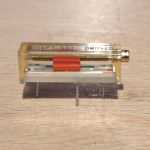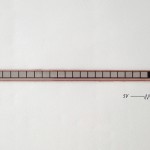Textile pressure sensor
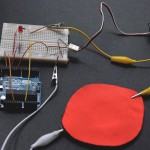
Pressure sensor is made like a bend sensor with a conductive thread, velostat, conductive fabric and non-conductive material. Structure of pressure sensor (click for bigger picture) Parts of the sensor: – Conductive thread : to connect threads in the circuit – Non-conductive material (neoprene) : to give the sensor structure – Velostat : […]
MakeyMakey
Lucky Dragons
custom resistor… DIY tremolo box
Motors & Arduino

We have tried Servo and DC motors already. (Here I’m gonna concentrate a little more on DC motor, since servo is already described in Mika’s course note. ) The difference between the two is: Servo: * You can control the orientation and the angle of movement quite precisely. Normally the angle varies within 0 & […]
Flex Sensor
Week4: Textile Sensors

Challenge: Read Photocell and control Servo motor according to the light coming into the sensor. – What components do you need?? – How do you connect? – Which code to use? or what you need to modify?? Analog Sensor vs. Digital Sensor What are the differences between analog sensor and digital sensor? Digital Sensors It […]
How to connect Analog resistive sensors: Voltage Divider
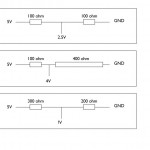
You can divide the voltage by using 2 resisters. If you have 2 exactly same resistors, the voltage gets half in the middle, like the first diagram. As the ratio between two resisters changes, the voltage you get in the middle (between the resisters) changes accordingly. As the analog input pins are reading the voltage […]
PIR MOTION SENSOR
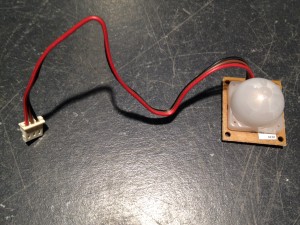
PIR stands for Passive Infrared This sensor detects motion by measuring changes of heat in its surroundings. It is easy to connect if you follow carefully this few steps. For this Tutorial you will need: 1 Arduino Board 1 PIR Sensor 1 10kΩ Resistor Cables This is what the sensor looks like. When hooking up the […]
